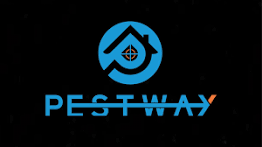Ortonville Squirrel Removal
Contents
ortonville Squirrel Trapping Services
Ortonville Squirrel Control Service
Professional Squirrel Removal
When it comes to squirrel removal in Ortonville Michigan, we are experts on handling animals in the attic that have made their way in. Our team undergoes training annually to stay up to date on the latest squirrel removal methods and traps. This insures we are always able to provide the fastest, safest and most effective squirrel removal services.
Quality Squirrel Prevention
With nuisance animals have been removed, smells and odors a left behind are attractive to other animals. As a Ridge-Guard certified installation company, we know the importance of being able to expertly seal up and repair all areas of a home that nuisance animals frequently enter. We also have extensive experience in sealing entry holes in unique situations.
Does Homeowners Insurance Cover Squirrel Damages?
Unknown to many homeowners, the majority of homeowner insurance policies have a clause stating that rodent damages are not covered. With squirrels being rodents, crushed attic insulation, gnawed wires and/ or fires as a result of this or holes on your roof may not be covered.
What is the squirrel removal process?
- Thorough Home Inspection
- Trap Setup and Animal Removal
- Entry Point Repair and Closure
- Squirrel Exclusion and Proofing
- Damage Repairs and Clean up
Secure Your Attic Today!
Call us today for fast, professional and affordable squirrel removal services in Ortonville Michigan.
Squirrel Facts
Squirrel is a term that most use to refer to a kind of familiar fluffy-tailed, tree-climbing rodent, or “tree squirrel”. However tree squirrels are only a part of the true squirrel family, which also includes chipmunks, groundhogs and prairie dogs. On this page, Havahart® offers facts about the familiar tree squirrel, including general facts and how to identify damage.
Squirrel Habitat
As indicated by their name, tree squirrels are arboreal, and they often make their homes either in leaf nests or inside tree cavities. All tree squirrels rely heavily on the availability of mast (the dry fruit from woody plants and trees) – especially acorns and other nuts – for their survival. So a tree squirrel’s habitat must consist of these nut-bearing trees.
Squirrel Diet
The majority of a squirrel’s diet consists of hard mast like acorns, hickory nuts, walnuts, or seeds. In fact, from September through March, one squirrel requires around 1.5 lbs. of mast per week to survive. Because a squirrel’s digestive system is not equipped to absorb cellulose, they will only eat green plants, twigs and bark in desperation.
Squirrel Behavior
- Activity: Diurnal in nature, squirrels are mainly active during the day. They do not hibernate but will typically spend long hours in their nests during the cold winter months.
- Nesting: Tree squirrels make their homes in trees, either in natural cavities or leaf nests constructed of leaves, twigs, bark and other available nesting materials.
- Communication: Squirrels are extremely vocal – they bark, chatter, scream, and purr to communicate with one another. They also communicate through body language, by moving their tails and stomping their feet.
- Food Caching: In warmer months when food is more abundant, squirrels cache (hoard) food like nuts for the winter. They will dig small holes in the ground to bury their food, and sometimes they will use abandoned burrows, flowerpots or other available locations to hide their stash for a later date.
